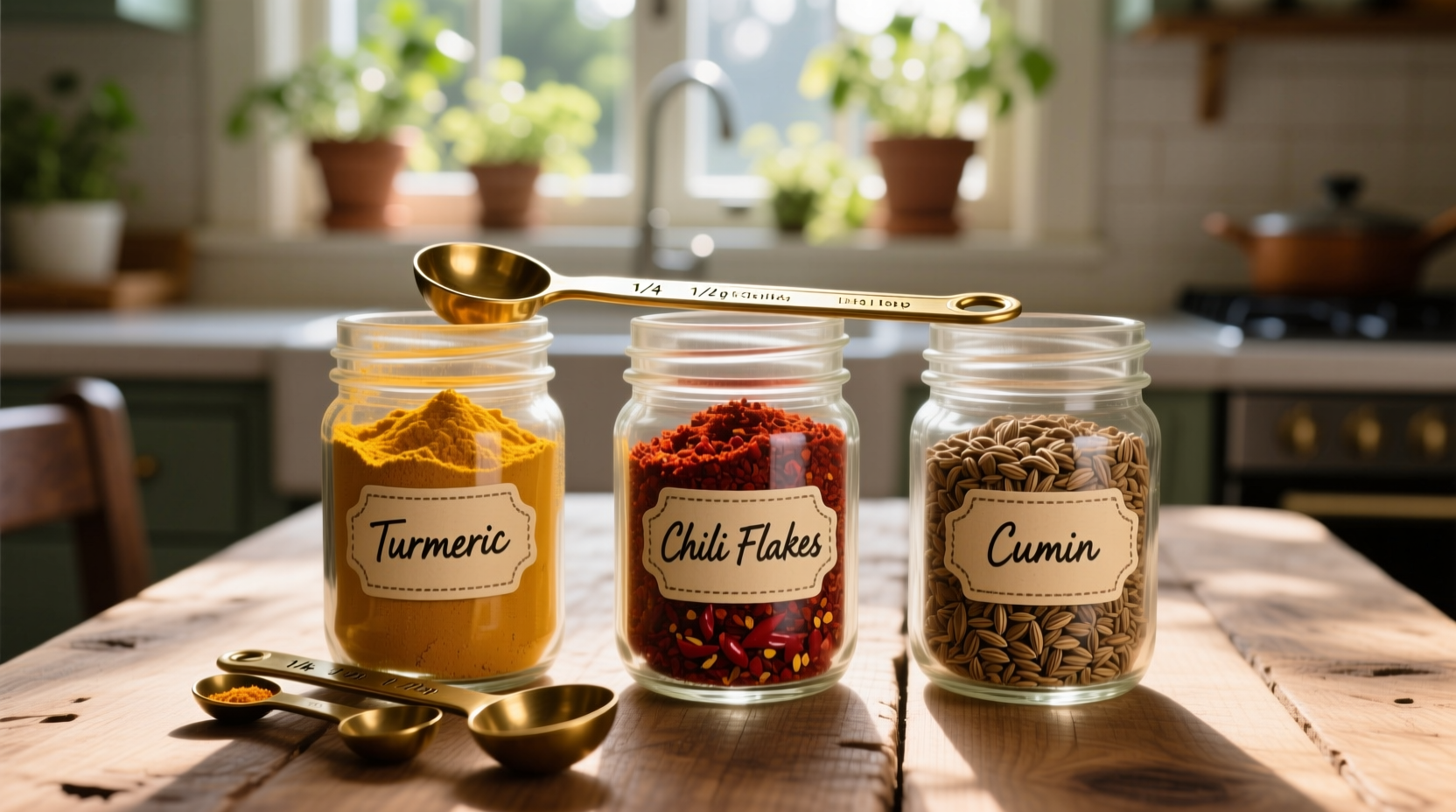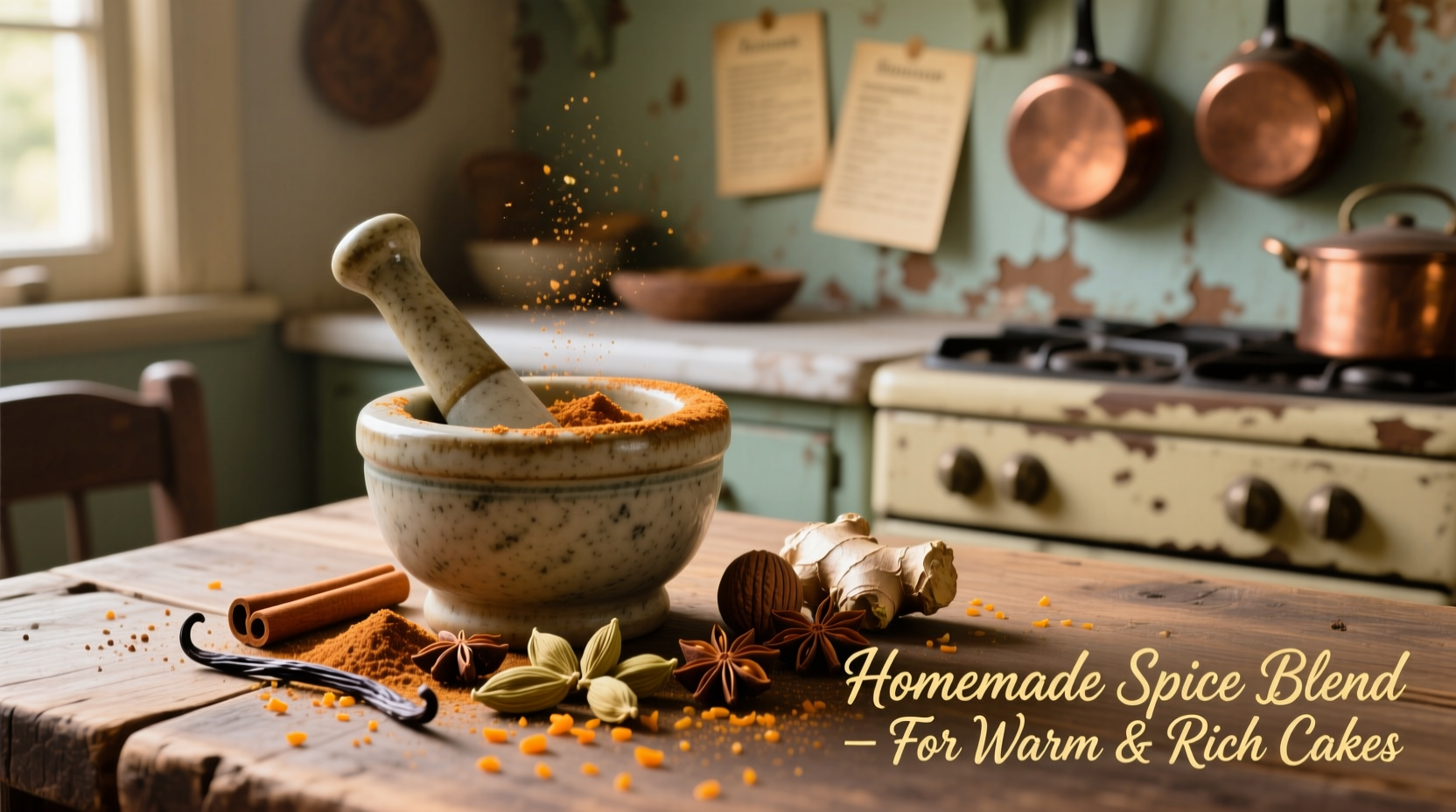For most cake recipes, the ideal spice mix combines 2 teaspoons cinnamon, 1 teaspoon nutmeg, 1/2 teaspoon allspice, 1/4 teaspoon cloves, and 1/4 teaspoon ginger. This balanced blend enhances sweetness without overpowering delicate cake textures while creating complex flavor layers that develop during baking.
Discover how to transform ordinary cakes into extraordinary desserts with perfectly balanced spice mixes. Whether you're baking a classic carrot cake, warm apple spice loaf, or elegant holiday bundt, understanding spice chemistry and proportions makes all the difference between a bland disappointment and a flavor masterpiece. This guide reveals professional techniques for creating harmonious spice blends that complement rather than dominate your cakes.
Why Spice Balance Matters in Cake Baking
Unlike savory dishes where spices can shine prominently, cake baking requires delicate spice integration. The sugar, fat, and leavening agents in cake batter interact with spices in complex ways. As pastry chef Sophie Dubois explains, "Spices in cakes need to create subtle warmth rather than assertive flavor—think of them as supporting actors enhancing the main performance of your cake's texture and sweetness."
When spices are improperly balanced, cakes suffer from common issues: bitter aftertastes from too much clove, overwhelming heat from excessive ginger, or flat one-dimensional flavor from relying solely on cinnamon. The ideal spice mix creates what culinary scientists call "flavor synergy"—where the combined effect exceeds the sum of individual components.
Essential Components of Cake Spice Blends
Understanding each spice's role helps create custom blends for specific cake types. Here's how the primary spices function in cake recipes:
| Spice | Flavor Profile | Optimal Cake Applications | Maximum Proportion |
|---|---|---|---|
| Cinnamon | Warm, sweet, woody | Carrot cake, apple cake, spice cake | 60-70% of blend |
| Nutmeg | Earthy, slightly sweet, nutty | Pumpkin cake, vanilla cake, coffee cake | 15-20% of blend |
| Allspice | Complex (cinnamon+nutmeg+cloves) | Spice cake, gingerbread, holiday cakes | 10-15% of blend |
| Cloves | Intense, medicinal, sweet | Christmas cakes, fruitcakes | 3-5% of blend |
| Ginger | Spicy, citrusy, warm | Gingerbread, lemon-ginger cake | 5-10% of blend |
Creating Your Signature Spice Blend
Professional bakers follow these steps to develop perfectly balanced spice mixes:
Step 1: Start with Fresh Spices
Ground spices lose potency within 6 months. For optimal flavor, use whole spices and grind them just before mixing. "I keep my cinnamon sticks, whole nutmeg, and allspice berries in airtight containers away from light," shares Dubois. "Freshly ground spices release volatile compounds that create more complex flavor profiles in baked goods."
Step 2: Balance Warmth and Sweetness
The most successful cake spice blends maintain a 4:1 ratio of warm spices (cinnamon, nutmeg, allspice) to pungent spices (cloves, ginger). This prevents any single spice from dominating while creating layered flavor development during baking.
Step 3: Consider Your Cake Base
Different cake batters interact uniquely with spices:
- Dense cakes (carrot, banana): Can handle 25% more spice than light cakes
- Oil-based cakes: Spices distribute more evenly than in butter-based recipes
- Fruit-containing cakes: Reduce spice quantities by 20% to avoid flavor competition
Regional Spice Traditions for Cake Baking
European baking traditions offer valuable insights into spice balance. Historical research from the University of Gastronomic Sciences reveals how spice usage evolved in cake recipes:
| Historical Period | Common Spice Mixes | Modern Adaptation |
|---|---|---|
| Medieval (14th-15th c.) | Equal parts cinnamon, ginger, cloves, long pepper | Use 1:1:0.25:0.1 ratio for historical recreations |
| Renaissance (16th c.) | Cinnamon dominant with supporting nutmeg | Base for modern "pumpkin spice" variations |
| Victorian (19th c.) | "Mixed spice" (cinnamon, nutmeg, allspice, mace) | Traditional British cake spice blend still used today |
"Many contemporary bakers don't realize that what we call 'pumpkin spice' today bears little resemblance to historical spice blends," notes Dubois. "True European baking tradition emphasizes balance where no single spice announces its presence—it's the harmony that creates the magic."

Troubleshooting Common Spice Issues
Even experienced bakers encounter spice-related challenges. Here's how to solve the most frequent problems:
Problem: Bitter Aftertaste
Cause: Excessive cloves or allspice
Solution: Reduce cloves to 1/8 teaspoon per cup of flour; pair with 1/4 teaspoon vanilla to counteract bitterness
Problem: Flat, One-Dimensional Flavor
Cause: Over-reliance on pre-mixed "pumpkin spice"
Solution: Create custom blends using freshly ground whole spices for layered flavor development
Problem: Spices Settling at Bottom
Cause: Improper incorporation
Solution: Whisk spices thoroughly with dry ingredients before adding liquids; sift twice for even distribution
Storage and Freshness Techniques
Proper storage maintains spice potency. Research from the Culinary Institute of America shows that spice blends lose 30% of volatile compounds within 30 days when stored improperly. Follow these guidelines:
- Store in airtight glass containers away from light and heat
- Label with creation date—discard after 3 months for optimal flavor
- Freeze whole spices (not ground) for up to 1 year without flavor degradation
- Revive stale spice blends with 1/8 teaspoon freshly grated orange zest per tablespoon of mix
"Many home bakers don't realize that the container matters as much as the spices themselves," explains Dubois. "Dark glass jars preserve volatile compounds better than plastic or clear containers. I keep my spice blends in amber bottles stored in a cool pantry cabinet."
When to Make Your Own vs. Use Commercial Blends
While commercial spice mixes offer convenience, they often contain anti-caking agents that dull flavor. Create your own blends when:
- Baking special occasion cakes where flavor precision matters
- Accommodating dietary restrictions (many commercial blends contain gluten)
- Seeking authentic historical recipes
Use commercial blends only for everyday baking when time is limited, but always supplement with freshly grated nutmeg for brightness. "That final grating of nutmeg transforms even the most basic spice mix," Dubois recommends.
Advanced Flavor Enhancement Techniques
Professional bakers use these methods to maximize spice impact:
- Dry-toasting: Heat whole spices in a dry skillet for 2-3 minutes before grinding to intensify flavors
- Infused liquids: Steep spices in warm milk or cream for 30 minutes before incorporating into batter
- Layered addition: Add 75% of spice mix to dry ingredients and 25% to wet ingredients for even distribution
- Acid balancing: Add 1/8 teaspoon lemon zest per teaspoon of spice blend to brighten flavors
"The secret to exceptional spice integration is understanding how heat transforms flavors," Dubois reveals. "Spices added to cake batter undergo chemical changes during baking—clove compounds mellow while cinnamon notes intensify. That's why precise ratios matter more than you might think."











 浙公网安备
33010002000092号
浙公网安备
33010002000092号 浙B2-20120091-4
浙B2-20120091-4